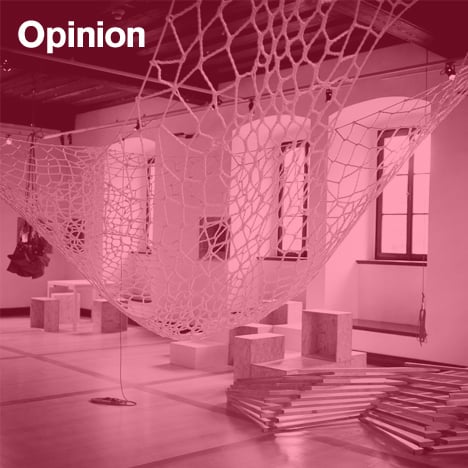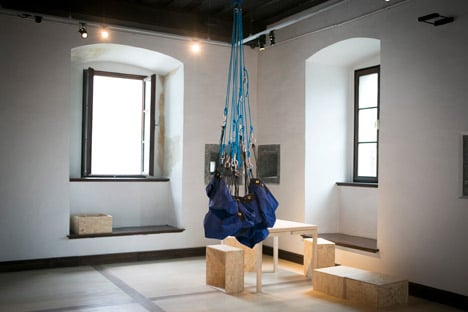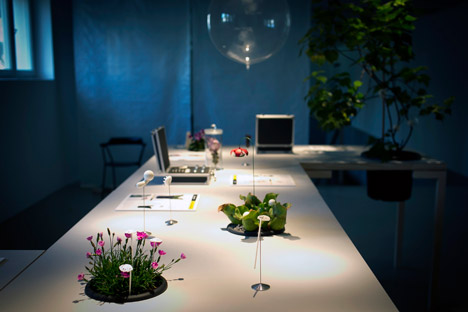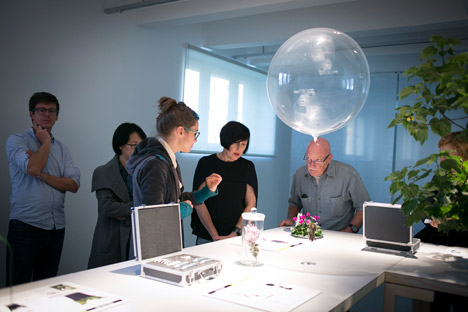
"Design fairs fail to represent what's going on in the rest of the world"
Opinion: driven by economics and overly concerned with "iconic" design and star names, international design fairs have lost their way. But BIO 50, the design biennial in Ljublana, offers a refreshing alternative, says Louise Schouwenberg.
The greedy consumer will not find new chair designs or nifty smart gadgets at the 24th design biennial of Ljubljana, titled BIO 50: 3,2,1… Test. Nor will he find the names of famous designers in the list of participants – unless he looks closely and notices those names are credited as supervisors of the design teams that created proposals in the months before the opening event.
In contrast to the usual biennials, this one is not about commercial products but is rather concerned with collaborative social projects aimed at the advancement of the world, or at least providing a point of difference to the multitude of conventional design fairs throughout the world. There is a touch of irony in the choice to (re-)appropriate old socialist ideals, considering that Slovenia belonged to the Socialist Federal Republic of Yugoslavia until 1991. But for an international design biennial this focus on collaboration is surely remarkable. Yes, there's increased attention more generally in the design world at the moment for "social design", and yes, there's an increased rhetoric on the presumed relevance of design projects. But those projects usually feature only in the margins of commercial design fairs, which remain focussed on iconic products of star designers.
There are a tiny number of exceptions, such as the Istanbul Design Biennial, which in 2012 dealt with the theme Imperfection and in 2014 focuses on The Future Is Not What It Used To Be. Linking an intriguing theme to an international design fair is one way of dealing with the complex role of design in today's society.
The first World Expo, which took place in 1851 in the Crystal Palace in London, displayed the best in industrial production and design, and thereby represented a faith in technical innovation as well as cultural and societal progress. Even the first specialised international design fairs, which started to boom after World War II, were organised as optimist manifestations of a faith in the benefits of industrial production and, more generally, a faith in progress. But when in the 70s the disastrous consequences of industrialisation and globalisation began to become apparent, it had little effect on the organisation of international design fairs, which continued to present positivism only. One aspect did change in the decades that followed: in the 80s and 90s the focus shifted from well-functioning industrial products to "iconic" designs, manufactured from precious materials in limited editions.

Through this shift something important was lost. The ideals of the early years were, at best, relegated to the fringes, and the design world barely raised an eyebrow. Perhaps not so strange, as by then cultural significance and technological innovation were becoming increasingly overshadowed by the criteria of commercial success. Something similar happened in the art world, where museums lost their role of distinguishing excellence from mediocrity to the market. Ever since, cultural significance appears to be equal to economic value.
Even the 2008 crisis did not put an end to this. The crisis hit the world of design hard and affected both companies and design studios. Nevertheless, this could hardly be discerned at the growing number of international design fairs. All parties displayed optimism over assumed commercial success, if not with a painful grin for those who cared to notice.
In line with this optimism, which seems to unequivocally belong to design, and in line with a continuous demonstration of faith in innovation, most design fairs now claim to only present the "best in design". The "best" usually means "iconic" designs, created by a handful of star designers, and the newest technical gadgets that will sell best.
More and more international design fairs fail to represent or indicate what's going on in the rest of the world. Perhaps this explains why most of them have lost the atmosphere of excitement that characterised the Crystal Palace World Expo and also characterised the early international design fairs of the 20th century. These created real revolutions in design, whereas nowadays we are confronted with an overload of commercial crap and boring presentations at the imm Cologne, the Salone del Mobile, Design Miami/Basel, etc.

Photograph by Ana Kovač/MAO
The quest to discover the exceptional in a sea of mediocrity at these events is no less than exhausting. Few visitors will admit it in the open, but how glad are they all when an obliged visit to the fair is over again. Where's the excitement over real innovation? And what is innovation in the 21st century, if neither industrial production nor commercial success succeeds in providing new perspectives on the future?
Jan Boelen, the curator of the Slovenian biennial 2014, believes the time is over for design festivals that function as elitist presentation platforms of commercial end products. "I have nothing against products, but their presentation is already taking place on the market where they belong," he says. "The biennial has – as a format – a greater potential and can align itself with the original ideals and the urgencies of the present time. A biennial should not feature as a mere spectacle of big names and distinctive products."
Boelen started his approach to this year's BIO 50 by questioning the question. Was there still a driving necessity for a design biennial, here or elsewhere in the world, and did the conventional format still make sense?
"I saw stagnation. Not just in the worldwide economic crisis that had also hit Slovenia hard. But I also saw stagnation in design," he explains. "I decided to view the Slovenian biennial as a laboratory for design, a platform of production, which would allow designers to collaborate with each other as well as with local and international companies and experts."
"I asked each team 'what are your dreams about a possible future?' Then, I advised them to deploy available networks and contexts. After all, only by making use of energy from the region are we able to realise long-term projects as opposed to the brevity of a design fair at some random location."
In 2013, a draft to participate in the BIO 50 biennial of Ljubljana was issued through the media and, surprisingly, hundreds of mainly young designers and architects from all corners of the world signed up. Candidates were selected and divided into twelve teams. In the following months they researched themes like affordable living conditions, the possibilities of alternative food production, alternative tourism and the potential of local craftsmanship.
Looking at the results it's obvious that many teams did not succeed in collaborating in the way they had intended when they started, and many of the final results on display at the biennial can be linked only to individual designers. One soloist project is worth mentioning here: the Continual House by Rafailidis & Davidson (part of the Affordable Living team).

By far one of the best collaborative efforts, with the best results, was the Nanotourism team that researched sustainable forms of tourism, both in and outside of Slovenia. By promoting a form of tourism that makes use of local possibilities, is organised bottom-up, and assumes an active participation of future tourists, the projects are implicitly commenting on the current tourist industry and the harmful consequences it has on ecosystems and local conditions. But more than this, they offer imaginative, viable alternatives. The Designing Life project is also worth noticing, as well as the Engine Blocks project.
In contrast, projects that tried to come up with novel ideas on production, such as The Fashion Industry and Hidden Crafts, are disappointing. Apart from some nice physical outcomes they fail to provide any much needed new insights. Other projects suffer from too much self-confidence. They offer fresh ideas and good intentions, dressed up with swollen rhetoric about the future roles laid out for social designers, but lack a sense of reality. A good conversation is only as good as the well-informed, strong willed people you have it with. Wandering through the presentations I could not help but wonder what results we would have seen if a few of those cursed internationally acclaimed designers had brainstormed about the same themes. Why did they not get involved?
So does BIO 50 offer an alternative to the usual format of a design fair? I think so. If only for validating the most fundamental subjects of our time, for promoting the notion of design as an on-going research as well as a changing agent, and for actively engaging both local and global parties for long-lasting collaborations.
By renouncing "iconic" design and focussing on real urgencies in the world, for which viable alternatives were sought and (sometimes) found, BIO 50 sparks the energy that is currently missing in most of the international design fairs. Moreover, the ambitions have landed in a thought-provoking catalogue, which will last as an optimist testimony of new ways of thinking, new ways of working, and new ways of presenting. The BIO 50 biennial proves that design fairs can reclaim the invigorating role they once played, by facing the real urgencies of the world and showing the surprising and on-going potential design has to offer.
Louise Schouwenberg is a design and art critic, based in Amsterdam. She is head of the design masters programme Contextual Design at Design Academy Eindhoven, and course director of the design and fine arts masters programme Material Utopias at the Sandberg Instituut / Gerrit Rietveld Academy Amsterdam.